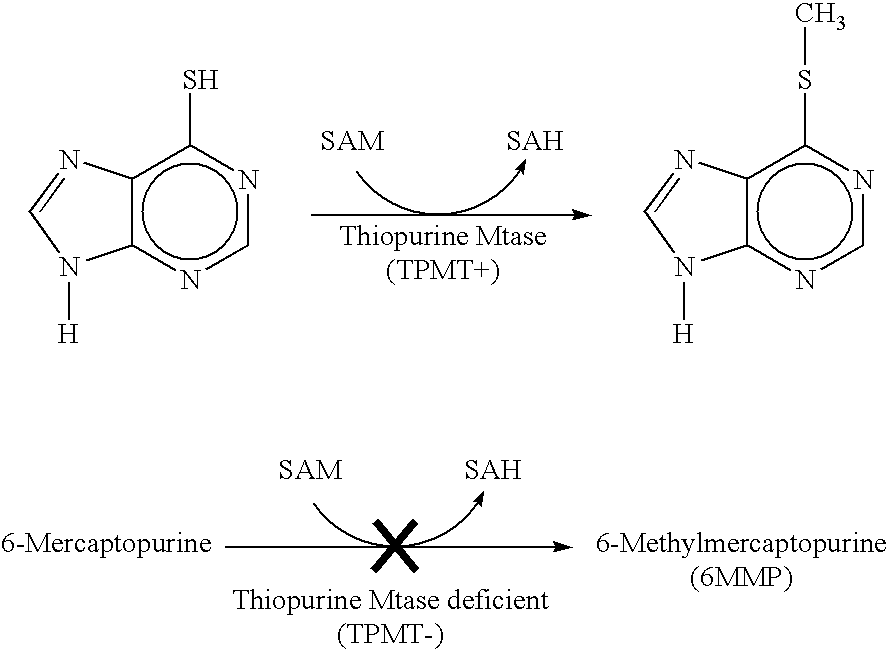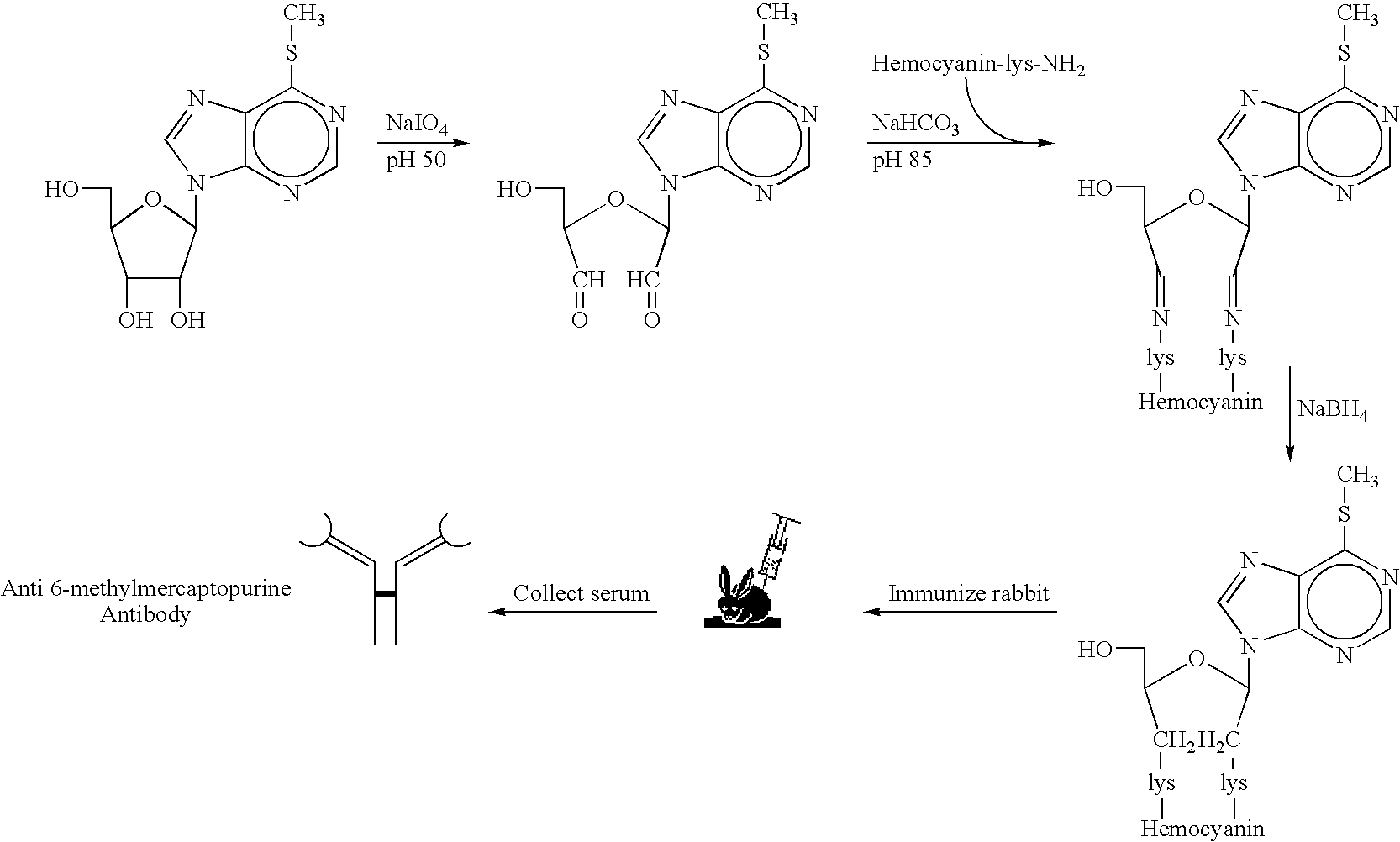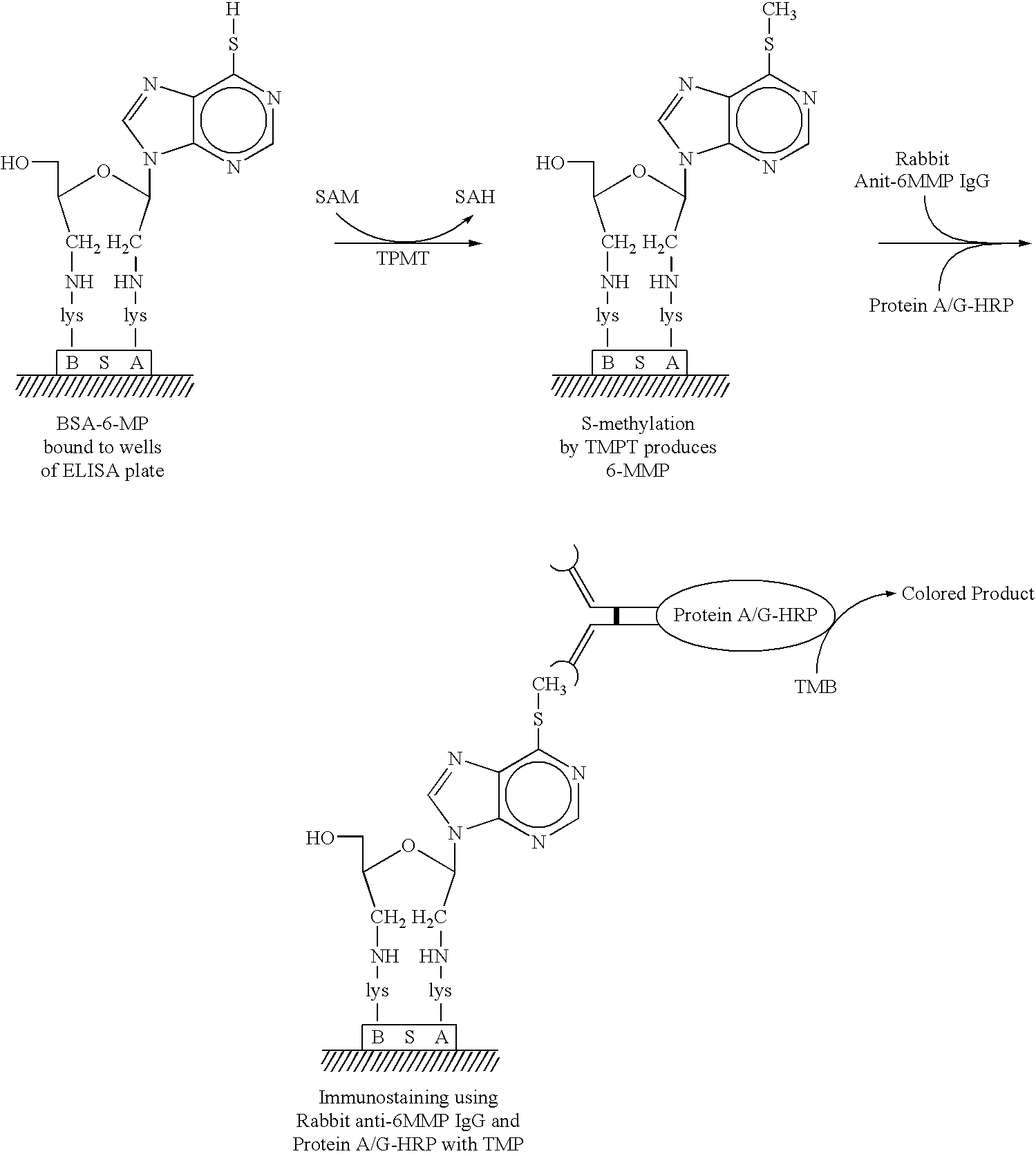Rapid, immunochemical process for measuring thiopurine methyltransferase
a thiopurine methyltransferase and immunochemical technology, applied in the field of rapid immunoassays for thiopurine methyltransferase, can solve the problems of limiting the potency of drugs, significant fraction of the population cannot metabolize certain commonly employed therapeutic drugs, and unmethylated 6-mercaptopurine builds up to toxic levels in the bloodstream of tpmt-deficient individuals, so as to improve the speed and technical simplicity of tpm
- Summary
- Abstract
- Description
- Claims
- Application Information
AI Technical Summary
Benefits of technology
Problems solved by technology
Method used
Image
Examples
example 1
Preparation of Non-Isotopic TPMT Immunoassays
[0068]Not only is there no available non-isotopic immunoassay for TPMT, there is also at present no commercial supplier of TPMT, which can be used as a positive control for enzyme assays. Accordingly, (A) considerable effort was expended to clone and express the human TPMT enzyme in E.coli; and to partially purify, characterize, and optimize recombinant hTPMT; (B) High titer rabbit antibodies to 6-MMP were produced; and purified anti-6-MMP IgG was demonstrated to bind specifically to 6-MMP—but not to unmethylated 6-mercaptopurine.
A. Cloning, Expression, and Purification of Human TPMT
[0069]As a first step towards developing a rapid, non-isotopic assay for TPMT in red blood cells, adequate quantities of the human TPMT enzyme for control assays were needed. Therefore, the TPMT enzyme from human lymphocyte DNA was cloned and over-expressed, based upon the sequence data of Szumlanski et al. (1996).
[0070]Briefly, the cloning strategy was to ins...
example 2
Rapid Immunimigration (RIM) Cassette Assay for TPMT
[0093]As noted above, the Rapid Immunomigration (RIM) Cassettes of this invention are inexpensive, and allow for rapid, homogenous TPMT immunoassays. A purple band in the lower mobility position of the cassette signifies the presence of wild-type levels of TPMT, while a light purple or absent band indicates partial or complete TPMT deficiency.
1. Preparation of Red Blood Cell Lysates
[0094]Red blood cell extracts are prepared by a modification of the method of Weinshilboum et al (1978). About ˜1 ml of blood is drawn, then the erythrocytes are pelleted by 5 minute centrifugation at 3000 g. The pelleted cells (˜108) are resuspended in 0.5 ml of PBS. 2 ml of cold distilled water is added to achieve hypotonic lysis, followed by brief centrifugation. The supernatant (red blood cell lysate) is stored on ice prior to TPMT enzyme assays. For long term storage the lysate can be stored at −85° C. without loss in enzyme activity.
2. Preparation a...
example 3
Development of a Quantitative ELISA Assay for Red Blood Cell TPMT
[0106]As noted above, in certain cases, especially those in which TPMT levels are low or absent using rapid immunocassette assays, it may be important to determine the levels of TPMT activity more precisely. A quantitative TPMT ELISA assay would help a physician in deciding the correct dosage of thiopurine drugs which should be given to patients.
1. Preparation of BSA-6MP Substrate and Coating of Plastic ELISA Plates
[0107]BSA-6MP substrate for ELISA assays is prepared as already described above. Wells of plastic ELISA strips are coated at a concentration of 50-100 μg / ml 6MP-BSA (Table 1). This substrate concentration is more than sufficient for immuno-chemical detection of TPMT using rabbit anti-6MMP IgG and peroxidase conjugated ProteinA / G. Coated plates are stored in sealed plastic bags at 4° C. prior to use.
2. Development of Quantitative ELISA for TPMT
[0108]Quantitative ELISA tests are performed using 1 to 20 Units o...
PUM
 Login to View More
Login to View More Abstract
Description
Claims
Application Information
 Login to View More
Login to View More - R&D
- Intellectual Property
- Life Sciences
- Materials
- Tech Scout
- Unparalleled Data Quality
- Higher Quality Content
- 60% Fewer Hallucinations
Browse by: Latest US Patents, China's latest patents, Technical Efficacy Thesaurus, Application Domain, Technology Topic, Popular Technical Reports.
© 2025 PatSnap. All rights reserved.Legal|Privacy policy|Modern Slavery Act Transparency Statement|Sitemap|About US| Contact US: help@patsnap.com



